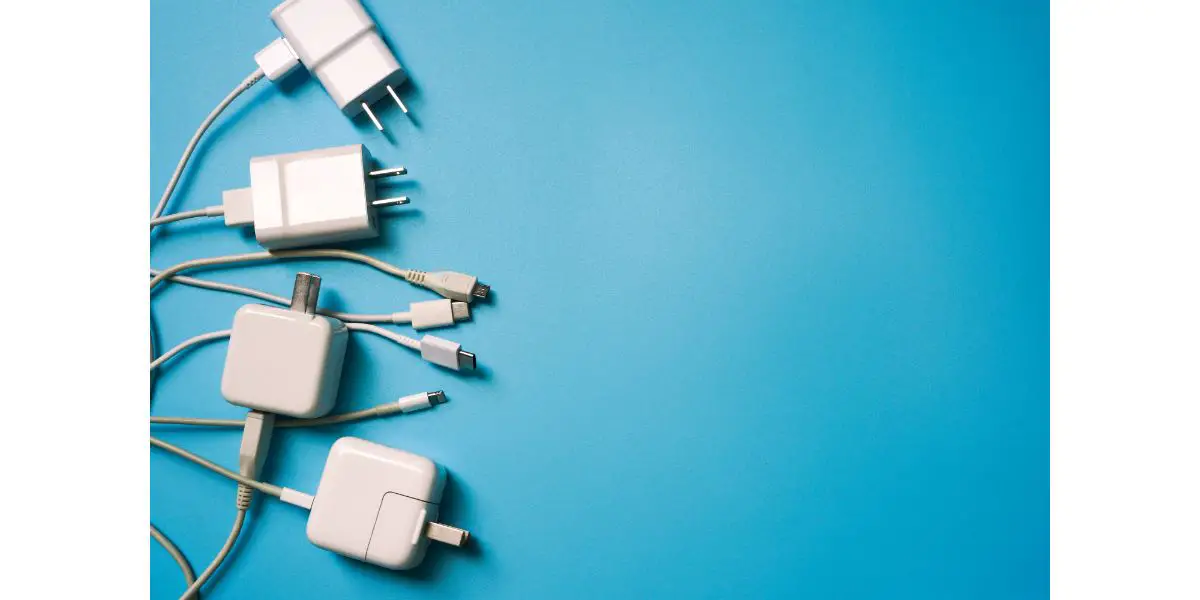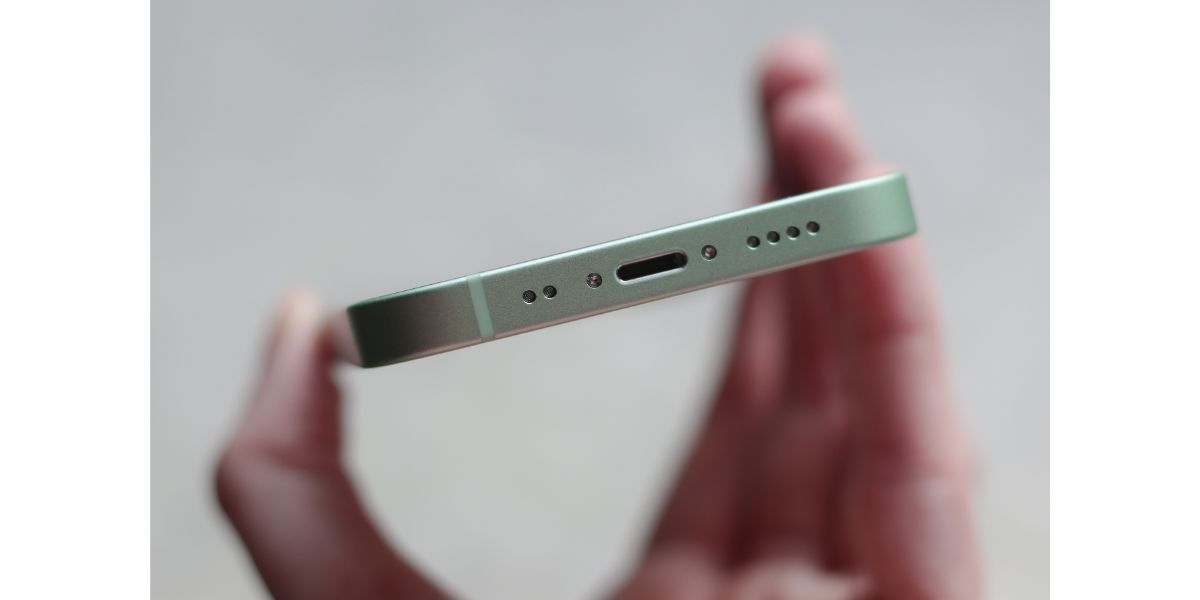Disclaimer: This post may contain affiliate links, meaning we get a small commission if you make a purchase through our links, at no cost to you. For more information, please visit our Disclaimer Page.
If your phone is your lifeline to the world, then your charger is its heart. The charger provides your phone or tablet with the power it needs to download and run apps. Find out why your charger only works in certain positions and how to solve the problem.
Table of Contents
Reasons Why Your Charger Only Works in Some Positions
Every phone and tablet sold in the world today has a charging port. You plug in a USB cable and use a charger to charge the batteries. Many devices use either a USB-C or a micro USB cable. Not only can you choose cables in different colors, but you can also choose the length that works for you. When the charger works properly, it doesn’t matter where or how you use the cable.
Have you ever had a charger that wouldn’t work unless you used it in a specific position? It might stop working unless you wiggle the cable a few times or bend it to wrap around your device. There are many reasons why this happens, and some great fixes that don’t take a lot of time or money.
1. Damaged Cable
Charging cables come in many colors and lengths that work with phones from the top brands. You can pick a 10′ or 12′ cable that stretches across the whole room or a shorter cable to charge your device on your bedside table. When the cable itself is damaged, it may only work in some positions.
It’s hard to see the pins inside the cable, but they connect with the battery terminals and charge your device. The damage you see can include broken or bent pins as well as broken wires.
If you need to move the cable a few times before your device recognizes it, there’s a good chance it has too much damage. You don’t need to spend much money to replace the cable. Third-party cables may work just as well as name-brand cables and cost much less. Avoid cheap cables, though, as they can cause even more damage to your phone or tablet.
2. Dust Buildup
Too much buildup of dust and other debris is one of the top reasons why your charger only works in a few ways. Your charger can also have a problem with pet dander or pet hair if you have one or more pets.
The buildup prevents the terminals and contact springs in the charger from forming a good connection with the cable’s pins. If you see any buildup inside the port or you notice signs of corrosion, remove it with an old toothbrush. You can also use a microfiber cloth or wire brush to remove the corrosion and/or buildup.
Do you carry your phone in your pocket or store your tablet in your bag? Unless you have a good case on your device, it can pick up a lot of pocket lint. That lint often sticks inside the charging port. You may not even see it when you try to charge your device.
Use a bright light and examine the inside of the phone charging port for any fuzzy spots. Use a microfiber cloth to remove the fuzz. These cloths will attract the lint stuck to the port without causing static electricity or affecting the device.
Two other ways to clean the port include canned air and a toothpick. If you choose the toothpick route, make sure you use a clean one. Keep a light shined inside the port as you slowly move the pick around. You need to avoid hitting the connectors as you can damage them with the pick.
Canned or compressed air works just as well. You need to give the can a brief shake and aim it inside the port. Press down on the nozzle to produce short bursts of air. The air will push out the debris trapped inside.
3. Counterfeit Accessories
Counterfeit products are a major issue facing technology lovers today. Even if you buy accessories from a well know website, you risk buying counterfeit products like a charger or charging cable. This is especially true if you have an iPhone or iPad. All Apple products must be MEI certified and have that label on their packaging.
When you plug in the cable or charger, your device should issue a message that warns you of the counterfeit product. Some products are such good replicas that they can fool your devices.
It’s just as easy to pick up a counterfeit charger for an Android phone as some scammers target Samsung users and users of other branded products. While these chargers and cables can work, they often produce too much power, which can damage your device.
Another issue is that they usually cannot produce all the power your device needs. This can affect how you charge your phone or tablet and cause the cable to only work in select positions. Buying and using a certified product is the only way to fix this problem.
4. Dying Charger
While most problems relate to your charging cable or port, you can also blame the charger itself. Many brands sell compatible chargers that plug into the wall or a USB port.
Using a different charger is the best way to test yours. If the new charger works fine, you know that the problem is with your old one. Though you can take it to a repair shop, it’s usually cheaper to just replace it. You can often buy a new charger for $20 or less.
5. Bad Wall Outlet
Before throwing your charger across the room or in the trashcan, check your wall outlet. If the outlet is faulty, it can affect both your charger and charging cable. It can even keep the cable from working unless you use it in a specific way.
Plug the charger into another outlet and see if your phone/tablet will charge. You should do the same thing if you use a surge protector because there’s a chance that one outlet on the protector doesn’t work while others do. Changing outlets is much cheaper than buying a new charger.
6. Faulty Charging Port
Your phone/tablet has a charging port on it that connects to a central control board. When you insert the charging cable, the pins inside it come into contact with the metal pads on the port that send an alert to the control board, which then begins charging your device.
If you need to keep moving your charger and using it in different positions, the chances are good that you have a faulty charging port. It might be loose and pulling away from your phone and the control board.
Most types of damage occur due to user error. Have you ever ripped your charging cable out of your phone/tablet because you were in a hurry? Maybe you have a habit of using too much force when you charge your device. You can also damage the port when you drop your device.
Many people cannot fix this damage on their own. A good repair shop can order the right parts for your device and fix the port, though this can take a few weeks or longer. Consider filing a claim if your device has an intact warranty or buying a new one.
7. Old Operating System
Android and Apple phones use different operating systems that impact how you use your phone and tablet. You should check for OS updates if you have a charging cable that doesn’t work in some positions. In some cases, your device has a common bug that affects the way it charges.
The manufacturer knows of the problem and releases updates to fix it. You cannot always rely on your device to find those updates automatically. Use your system settings to search for updates and install any available ones. Restart your device and use your charger to see if it now works.
8. Check for Malware
While you might think your phone is safe from malware, you can pick up viruses and other types every time you use your phone. Many users have malware on their tablets, too. Malware can cause pop-up ads to appear on your screen and give scammers access to your device as well as affect how you charge it.
Go online and do a free scan for malware. Most programs let you quarantine the infected files or remove them from your device. You can also install an app that automatically scans for viruses every few days.
Conclusion
Your phone and tablet are important devices that let you do everything from reading books and playing games to sending emails and surfing the web. There’s nothing worse than a device you can only charge in a few ways. All of these remedies and solutions show you how to fix a charger that only works in certain positions.


